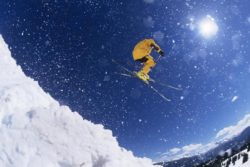JUMPERS KNEE

The patellar tendon begins in the thigh muscles, goes around the kneecap and even connects to the shinbone. When there is an issue with the tendon, such as soreness or a tear, patients have trouble straightening their knee. Patellar tendonitis, commonly referred to as jumper’s knee, is the long-term damage to the patellar that causes pain and other complications.
What are the causes of jumper’s knee?
Jumper’s knee or patellar tendonitis is very common among athletes who play sports where a lot of jumping is involved. Consistent jumping, especially during periods of intense training can lead to these types of sports injuries. Those with patellar tendonitis may also be at risk of further damaging the tendon, which could result in a small or large tear.
What are the symptoms of jumper’s knee?
The very first symptom of jumper’s knee is pain in the area between the kneecap and the shinbone. The pain usually begins while performing physical activity. It may eventually get to a point where it is constant and interfering with regular daily activities. This may include walking up the stairs or performing chores. As with any type of tendonitis, the pain will only get worse over time, which is why it is so important to seek professional sports medicine help.
What is the treatment for jumper’s knee?
If you are experiencing pain in your knee area, you may be suffering from patellar tendonitis. The best approach is to contact an experienced sports medicine doctor. Dr. Bob Meyer has worked with many professional and collegiate athletes with knee injuries.
Treatment for jumper’s knee may include a combination of many different methods including: non evasive EPAT shockwave therapy, MyAct Compression therapy and more. Dr. Bob will diagnose the cause of your pain and create a custom sports injury treatment program designed to get back to your top performance fast.